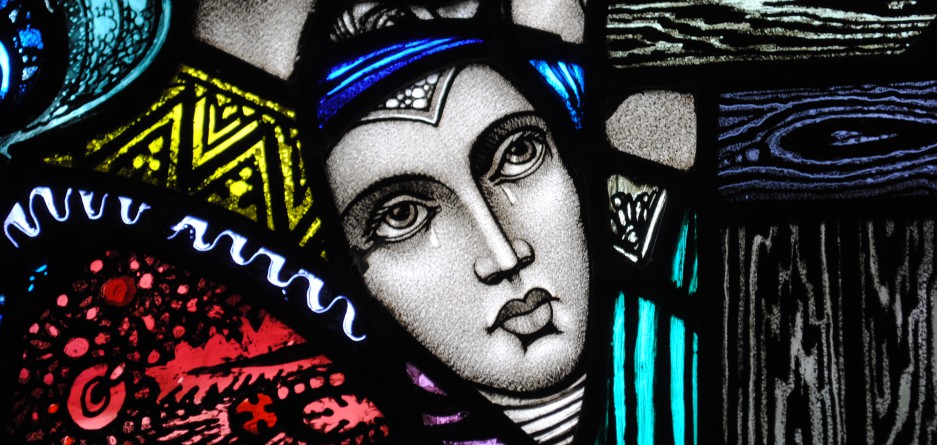
Joshua Clarke (1858 – 1921) came to Dublin from Leeds in 1877 and worked a sales representative for an ecclesiastical supplier. In 1886 he set up his own church decorating business at 33 North Frederick Street. Clarke was an entrepreneur, always looking for new opportunities to improve his business and in 1892 he added stained glass window provision as a service, acting as an agent for Mayer of Munich and bringing in a draughtsman and stained glass artist, James E. Pope, from England. Pope worked for the company for twelve years until he was replaced by William Nagle (1853 – 1923) a Dublin man, who had been a student of the Hibernian Academy Schools. Thus the firm of Joshua Clarke and Sons became established as a stained glass and church furnishings provider, initially in Ireland and from 1896 also doing work in England.
Joshua and his wife Brigid (née MacGonigal) had two daughters, Kathleen and Florence, and two sons, Walter and Harry. When Joshua died in 1921 his sons took over the running of the business, moving to larger premises at 6/7 North Frederick Street in 1924. Harry had established a significant reputation for both his stained glass and illustration work but with an increasing number of commissions, coupled with his own health problems, he progressively delegated full or partial execution of windows to Studios staff while he retained more of a design and supervisory role. In 1928 he employed two new artists Richard King (1907 – 1974) and William J. Dowling (1907 – 1980) to cope with the number of stained glass commissions being received. These artists learned to work in the Clarke style under his direct supervision.
Harry Clarke spent most of 1929 and the early part of 1930 in Davos, Switzerland receiving treatment for tuberculosis. Up to that point, according to Nicola Gordon Bowe, he had worked non-stop on stained glass and illustration commissions while his health was deteriorating to the extent that tuberculosis was affecting both his lungs.[1] The time spent in Switzerland was having a severe impact on the business. Clarke was unable to meet clients and was restricted in the work he could do as he was confined to bed for long periods. In March 1930 the business of Joshua Clarke & Sons was divided to form two new companies. Walter Clarke formally took over the church decoration business, keeping the original name, and Harry the stained glass business which became Harry Clarke Stained Glass Limited, sometimes known as Harry Clarke Studios but more generally referred to as the Studios. Charles B. Simmonds A.R.C.A., a stained glass artist from London, was engaged as the manager.
Harry Clarke died in Coire, Switzerland on 6th January 1931 aged 41. He had left his company in a healthy condition with a significant number of orders on the books, a good manager in charge, an excellent reputation for the work produced by the Studios in his idiosyncratic style and, very importantly, his name on the business.
Following Clarke’s death the Studios continued to work on delivering his designs for several commissions such as the Last Judgement for St. Patricks Church, Newport, Co. Mayo, and nine windows depicting angels for the Basilica of St. Vincent DePaul, Bayonne, New Jersey, USA. Simmonds continued as Principle Artist and manager until 1935 when he returned to England.
Richard King was then appointed manager, a role he held until 1940 when he left to pursue his own interests. William J. Dowling succeeded King as manager of the Studios, a position he held until the Studios closed 1973.
While some work was done for commercial premises and private homes, the bulk of the Studios output was for religious buildings. The work of the Studios can be found in every county in Ireland as well as churches in Great Britain, the US, Australia, New Zealand, the Caribbean and many countries in Africa – a testament to the unique achievement of Harry Clarke and the artists and craftspeople who worked in Harry Clarke Studios.
[1] Nicola Gordon Bowe, Harry Clarke: The Life and Work (Dublin: The History Press Ireland, 2012), p. 286.
